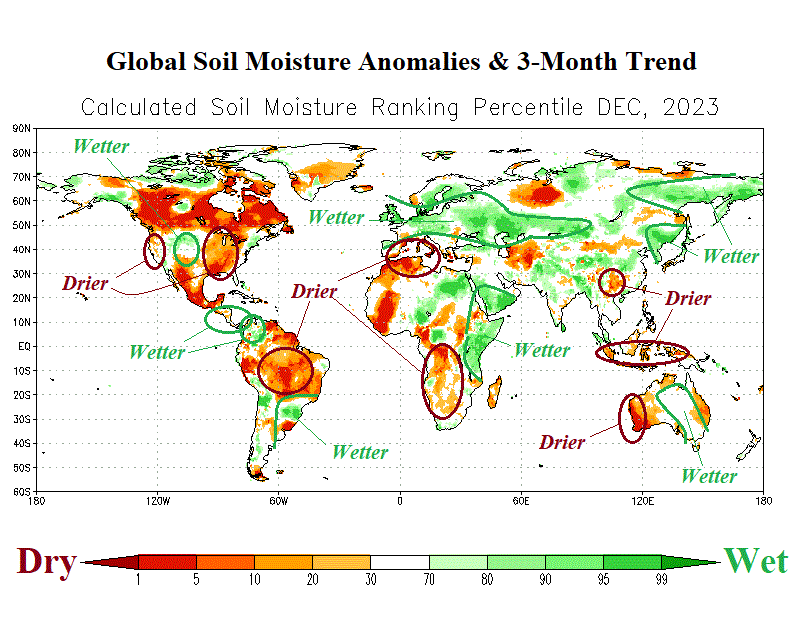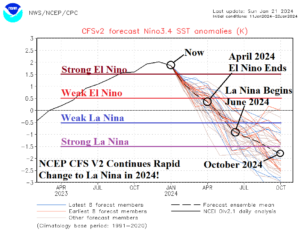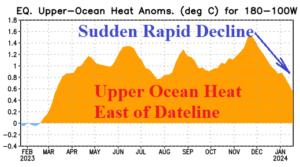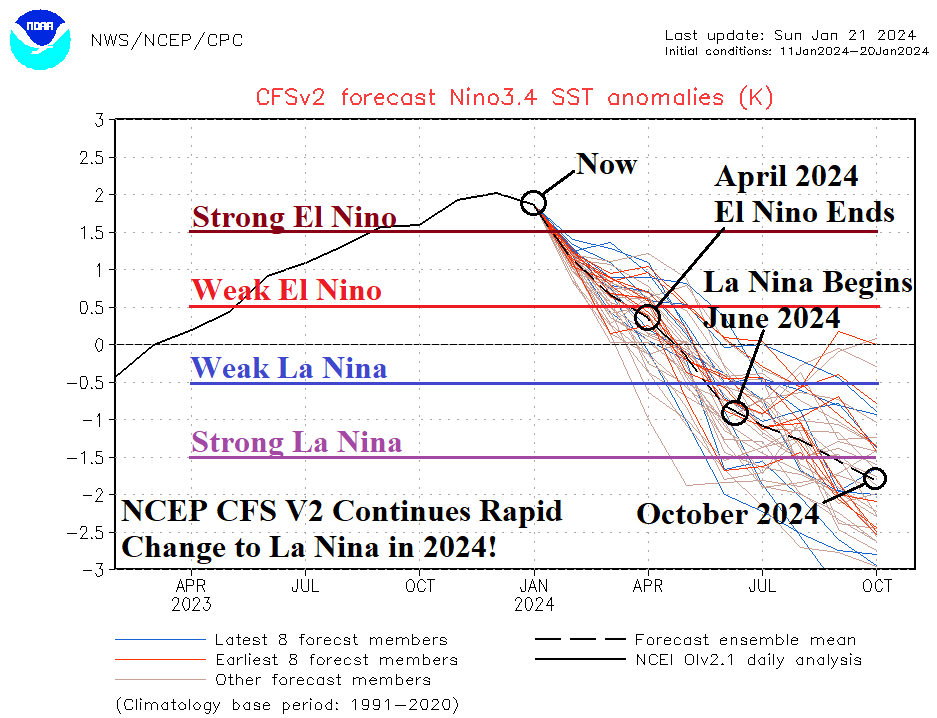
January 2024 Global Soil Moisture Trend
01/21/2024, 4:22 pm EST
Inaugural Year-2 Ahead Climate Outlook for North America
01/24/2024, 4:24 am EST

Fig. 1-2: The NCEP CFS V2 forecasts Nino34 SSTA to shift into strong La Nina by October 2024. Subsurface warmth fueling El Nino in the East Pacific is declining rapidly.
Discussion: The NCEP CFS V2 Nino34 SSTA forecast has relentlessly been forecasting a flip from the current strong oceanic El Nino to similarly intense La Nina by the end of 2024. Given the strength of the current El Nino and the general oceanic anomalous warmth poleward of the Pacific tropics, a rapid shift toward strong La Nina seems unrealistic. The latest NCEP CFS V2 Nino34 SSTA forecast insists on a decline in El Nino with neutral ENSO by April, weak La Nina by June, and strong La Nina by October (Fig. 1). A recent development supportive of this forecast is the sudden loss of upper ocean heat across the equatorial Pacific Ocean (Fig. 2). A large area of cooler than normal water has shifted from the subsurface equatorial West Pacific to 155W longitude at 150-to-250-meter depth. If the rate of heat loss in the subsurface equatorial Pacific continues at the current rate, the NCEP CFS V2 shift toward stronger La Nina for later this year will gain reliability. The Climate Impact Company constructed analog Nino34 SSTA forecast is a close match to the NCEP CFS V2 outlook in 2024. Extending the forecast through 2025 reveals a long-lasting La Nina event with varying intensity (Fig. 3). This week, Climate Impact Company updates 2024 AND 2025 climate forecasts largely connected to the fast-shifting ENSO regime.

Fig. 3: The Climate Impact Company constructed analog Nino34 SSTA forecast through DJF 2026 reveals return of a long-lasting La Nina.
![Climate-Impact-Company-logo-sm[1]](https://climateimpactcompany.com/wp-content/uploads/2023/08/Climate-Impact-Company-logo-sm1.png)
